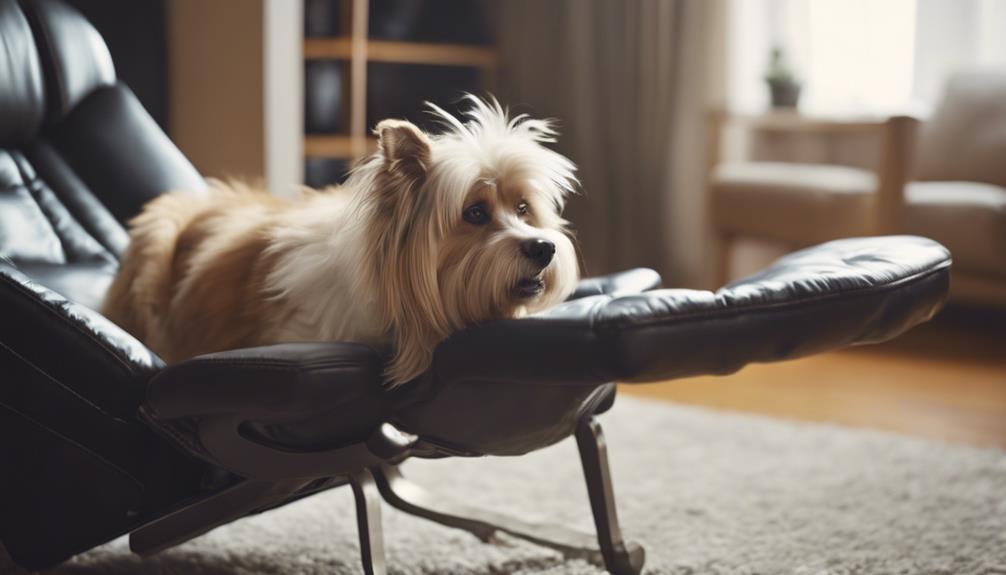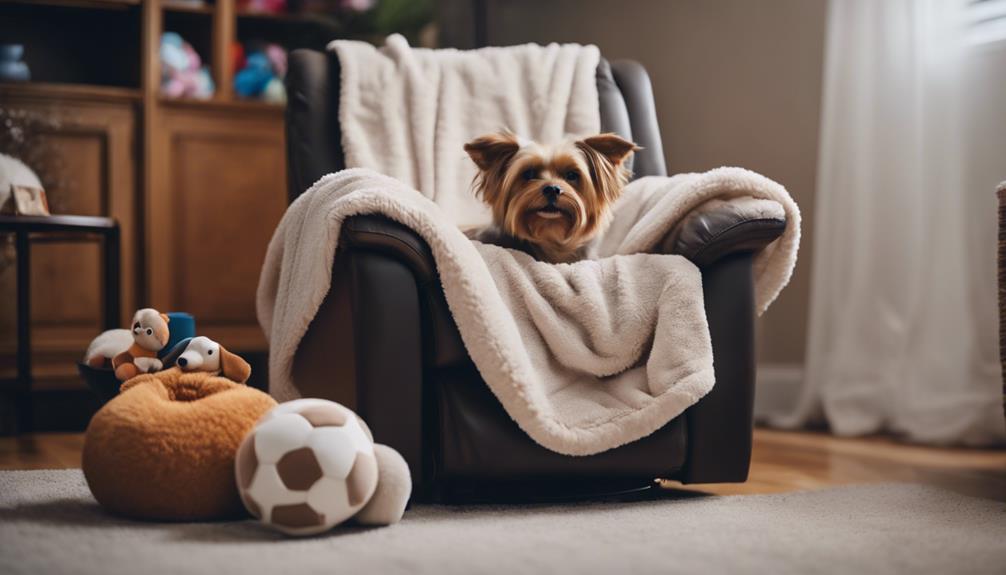Pet owners often overlook the potential dangers that recliners pose to their beloved furry companions. From curious cats to playful pups, pets may unknowingly place themselves at risk around these common household items. By understanding the behaviors of pets around recliners and taking proactive safety measures, we can create a secure environment for our four-legged friends.
Stay tuned to discover practical tips and insights on how to keep your pets safe around your recliner, ensuring their well-being and fostering a harmonious living space for both pets and furniture.
Key Takeaways
- Redirect pets to safer napping spots away from recliners.
- Locate pets before using the recliner to ensure their safety.
- Provide enclosed napping areas close to the recliner.
- Supervise pets closely when adjusting or getting up from the recliner.
Pet Behavior Around Recliners
When considering pet behavior around recliners, it is crucial to acknowledge the innate attraction that pets, both cats and dogs, have towards these furniture pieces due to the sense of security and comfort they provide in proximity to their owners.
Cats and dogs seek out quiet and covered spaces for napping, which recliners often offer. To redirect pets to safer napping spots away from the recliner, encourage them to use covered beds or designated pet furniture.
Providing enclosed napping areas close to the recliner but away from potential dangers can help ensure your pets' safety and comfort. Understanding your pet's natural tendencies and preferences can aid in creating a harmonious environment where they feel secure and content.
Safety Measures Around Pets
To ensure the well-being of pets around recliners, one must diligently adhere to safety measures that minimize potential hazards and accidents.
- Locate pets before sitting down in a recliner to ensure they are at a safe distance.
- Supervise pets closely when using a recliner, especially when adjusting the footrest or rocking.
- Check underneath and inside the recliner before getting up to prevent pets from getting trapped.
- Avoid reclining if alone at home or have someone else check for pets before leaving the chair.
- Consider using toys to distract pets when getting up from the recliner to prevent accidents.
Risks of Recliners for Pets

Discussing the potential hazards that recliners pose to pets is essential in ensuring their safety and well-being in shared living spaces. Recliners can present risks for pets of all sizes, with larger dogs at risk of getting their legs and tails trapped. Small pets may face even more significant dangers, potentially necessitating the avoidance of recliner use altogether.
Currently, no pet-safe recliners are on the market, highlighting the need for caution when pets are around these pieces of furniture. To mitigate these risks, consider using a regular chair with an ottoman as a safer alternative. Understanding these dangers can help pet owners take proactive measures to keep their furry companions safe and prevent potential accidents.
Safe Napping Areas for Pets
Creating designated and enclosed napping areas near your recliner provides pets with safe and cozy spots to rest, minimizing the risk of accidents. To ensure your pets have a secure place to nap, consider the following:
- Utilize covered dog or cat beds placed strategically near the recliner.
- Encourage pets to nap under coffee tables or in designated pet beds to keep them away from the recliner.
- Opt for furniture pieces that double as pet beds to offer safe napping spots.
- Ensure napping areas are enclosed and cozy to appeal to pets seeking comfort.
- Keep pets away from recliners by providing alternative napping spots that are still conveniently located.
Ensuring Pet Safety Measures

Ensuring Pet Safety Measures when using recliners requires vigilant supervision and proactive measures to prevent potential accidents involving pets.
Prioritize locating pets before sitting in a recliner to ensure they are at a safe distance. Close supervision is essential, especially when adjusting the footrest or rocking motion.
Before getting up, always check underneath and inside the recliner to avoid trapping pets. If alone at home, consider having someone check for pets before leaving the chair.
Additionally, using toys as distractions when moving from the recliner can help prevent accidents.
Final Tips for Pet Recliner Safety
For enhanced pet safety around recliners, implement these additional precautionary measures.
- Place pet-friendly barriers around the recliner to limit pet access.
- Use pet-proof covers on the recliner to prevent fur buildup and damage.
- Train pets to stay away from the recliner using positive reinforcement.
- Utilize motion-activated deterrents near the recliner to discourage pets.
- Schedule regular grooming sessions to reduce shedding and minimize pet hair around the recliner.
Conclusion
In conclusion, safeguarding pets around recliners involves understanding their behavior, implementing safety measures, and creating designated safe spaces.
By being aware of the risks posed by recliners and taking proactive steps to mitigate them, pet owners can ensure the safety and well-being of their furry companions.
It is essential to prioritize pet safety in the home environment to create a harmonious and secure living space for both pets and their owners.




